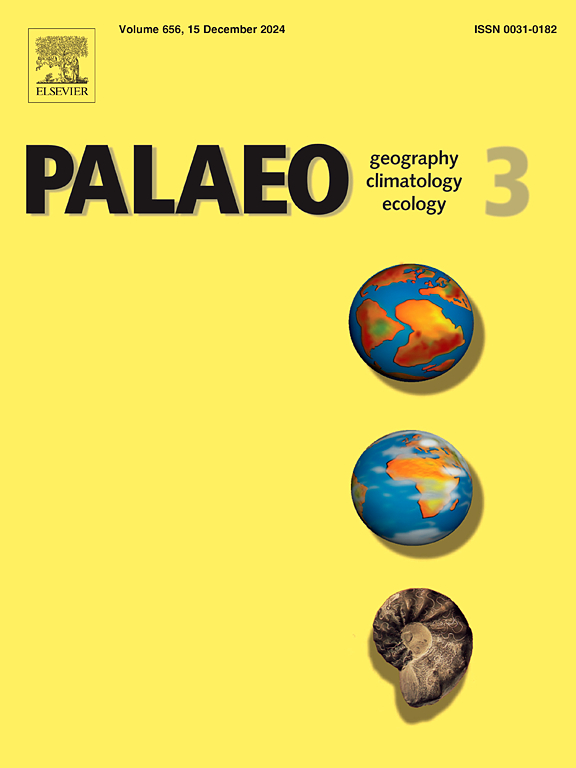Surface and bottom water dynamics across the onset of the Messinian Salinity Crisis in the Piedmont Basin (NW Italy): Integrating micropaleontological and stable isotope evidence
IF 2.6
2区 地球科学
Q2 GEOGRAPHY, PHYSICAL
Palaeogeography, Palaeoclimatology, Palaeoecology
Pub Date : 2025-02-12
DOI:10.1016/j.palaeo.2025.112811
引用次数: 0
Abstract
The pace and nature of paleoenvironmental dynamics leading to the Messinian Salinity Crisis (MSC) remain debated, with conflicting interpretations from the fossil and geochemical proxies.
This study focuses on two key sections in the Piedmont Basin (NW Italy), Pollenzo and Govone, representing the northernmost Mediterranean sector during the Messinian. By implementing the previously published calcareous nannofossil assemblages with new data and analyzing carbon and oxygen stable isotopes from benthic and planktic foraminifers, this research aims at understanding surface and bottom water conditions around the MSC onset (5.97 Ma).
In this gypsum-free part of the basin, calcareous nannofossil abundance remained stable for ∼40 kyrs into the MSC, before disappearing, likely due to taphonomic bias. Isotopic records from the benthic foraminifer Bolivina dilatata suggest variations in living depth, remineralization, temperature and isotopic composition of water. Oxygen isotope data from planktic foraminifer show little variation between the 6.83–6.79 Ma and 6.05–5.99 Ma intervals, suggesting only moderate salinity and/or temperature fluctuations between the different time intervals.
These findings interpreted in the light of previous records—including organic geochemistry, fish, pollen, and dinocyst fossils pointing to salinity fluctuations between normal marine to brackish—suggest that hypersaline conditions did not characterize the early phase of the MSC in this part of the basin. These insights challenge the traditional view of widespread hypersalinity during the MSC onset, highlighting the need to integrate multiple datasets to better understand the Messinian environments in the Mediterranean Basin.
求助全文
约1分钟内获得全文
求助全文
来源期刊
CiteScore
5.90
自引率
10.00%
发文量
398
审稿时长
3.8 months
期刊介绍:
Palaeogeography, Palaeoclimatology, Palaeoecology is an international medium for the publication of high quality and multidisciplinary, original studies and comprehensive reviews in the field of palaeo-environmental geology. The journal aims at bringing together data with global implications from research in the many different disciplines involved in palaeo-environmental investigations.
By cutting across the boundaries of established sciences, it provides an interdisciplinary forum where issues of general interest can be discussed.

 求助内容:
求助内容: 应助结果提醒方式:
应助结果提醒方式:


